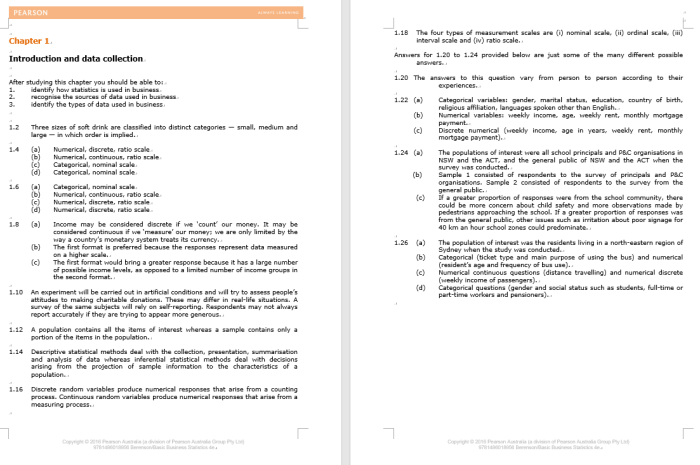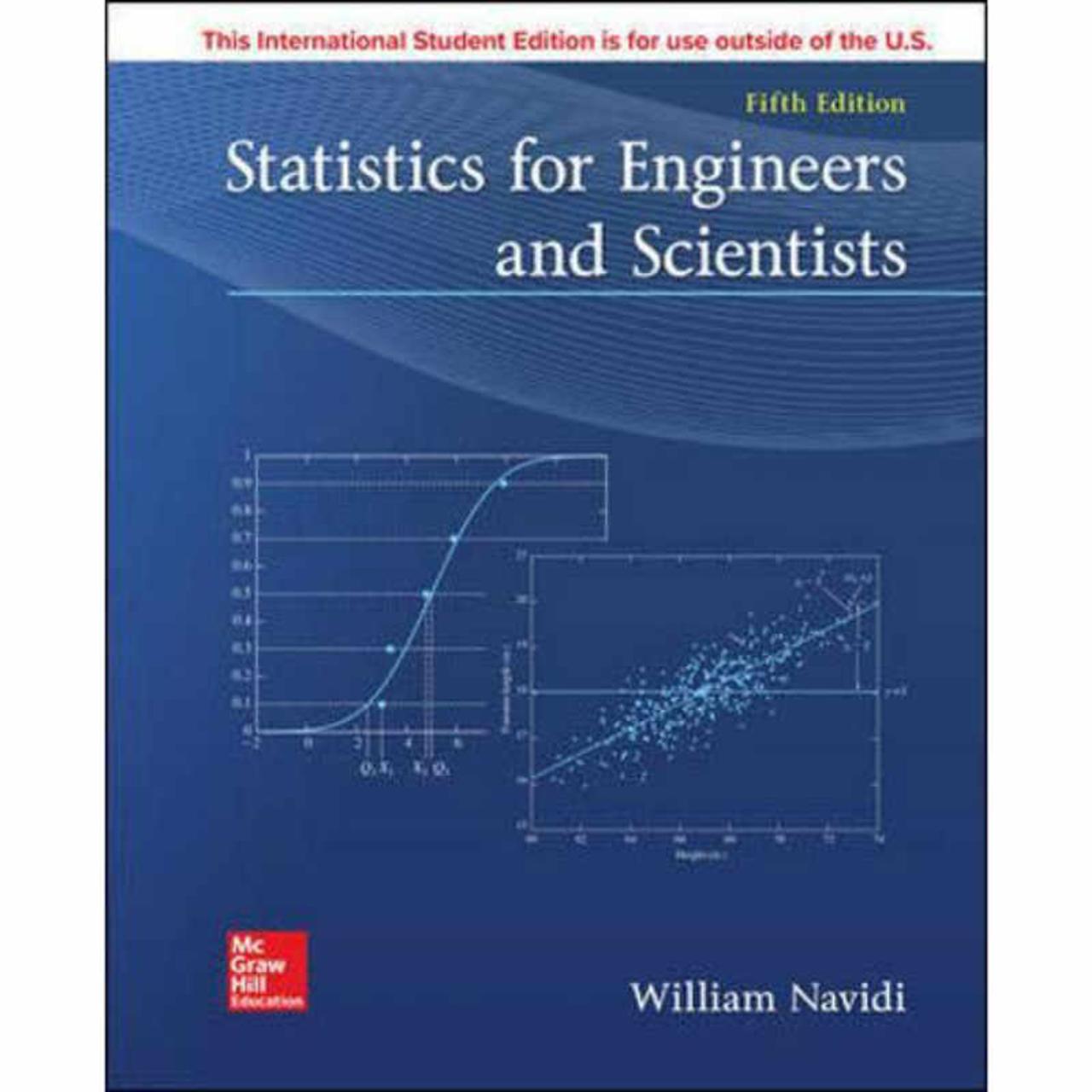Mind on Statistics 5th Edition is the ultimate guide to statistical concepts and applications. This comprehensive textbook provides a clear and engaging overview of the field, making it accessible to students and practitioners alike.
With its updated content, improved pedagogy, and enhanced visuals, Mind on Statistics 5th Edition is the perfect resource for anyone looking to master statistical analysis.
Introduction

Mind on Statistics, 5th Edition, is a comprehensive textbook that introduces students to the world of statistics. It provides a solid foundation in statistical concepts and methods, with a focus on developing critical thinking and problem-solving skills.
This textbook is designed for undergraduate students in various fields, including psychology, education, business, and social sciences. It assumes no prior knowledge of statistics and gradually builds upon the concepts throughout the book.
Purpose and Target Audience
- To provide a comprehensive introduction to statistical concepts and methods.
- To develop critical thinking and problem-solving skills in students.
- To cater to undergraduate students in psychology, education, business, and social sciences with no prior knowledge of statistics.
Key Features
The 5th edition of Mind on Statistics boasts several distinctive features that enhance the learning experience for students and instructors alike.
One key aspect is the inclusion of new and updated content, reflecting the latest advancements in statistical theory and applications. This ensures that students are exposed to the most current knowledge and best practices in the field.
Improved Pedagogy
The 5th edition also features improved pedagogy, designed to make the learning process more engaging and effective.
- Clear and concise explanations: The text presents complex statistical concepts in a straightforward and understandable manner, making it accessible to students with diverse backgrounds.
- Real-world examples: Abundant real-world examples illustrate the practical applications of statistical techniques, helping students connect theory to practice.
- Interactive exercises: Interactive exercises and activities throughout the text encourage students to actively engage with the material and reinforce their understanding.
Enhanced Visuals
The 5th edition features enhanced visuals that aid in comprehension and retention.
- Colorful graphs and charts: Eye-catching graphs and charts visually represent data, making it easier for students to grasp statistical concepts.
- Interactive simulations: Interactive simulations allow students to visualize statistical processes and explore the effects of different parameters.
- Step-by-step demonstrations: Step-by-step demonstrations guide students through statistical procedures, ensuring a clear understanding of each step.
Chapter Organization

The 5th edition of Mind on Statistics is organized into 22 chapters, each covering a specific topic in statistics. The chapters are arranged in a logical flow, starting with the basics of statistics and gradually progressing to more advanced topics.The
Whether you’re struggling with the intricacies of Mind on Statistics 5th Edition or seeking solutions for tiny white bugs invading your daylilies ( tiny white bugs on daylilies ), you’ll find a wealth of knowledge at your fingertips. Delve into the statistical concepts and explore practical applications, while also addressing common garden pests and their effective management.
Mind on Statistics 5th Edition empowers you with both statistical literacy and a green thumb.
first few chapters introduce the fundamental concepts of statistics, such as data collection, measurement, and probability. Subsequent chapters cover descriptive statistics, inferential statistics, and regression analysis. The final chapters focus on specialized topics, such as nonparametric statistics, time series analysis, and multivariate analysis.
Chapter Sequence
The sequence of the chapters is designed to provide a gradual progression of knowledge and skills. Each chapter builds on the concepts introduced in previous chapters, allowing students to develop a comprehensive understanding of statistics.For example, the first chapter introduces the basic concepts of statistics, such as data collection and measurement.
The second chapter covers probability, which is essential for understanding inferential statistics. The third chapter introduces descriptive statistics, which provides methods for summarizing and describing data. The fourth chapter covers inferential statistics, which allows researchers to make inferences about a population based on a sample.This
logical flow ensures that students have a solid foundation in the basics of statistics before moving on to more advanced topics.
Pedagogical Approach
The fifth edition of Mind on Statistics adopts a comprehensive pedagogical approach to engage students and foster their understanding of statistical concepts.
This approach emphasizes active learning, real-world examples, and case studies to create an interactive and meaningful learning experience.
Active Learning Exercises
The textbook incorporates a variety of active learning exercises, such as:
- Chapter-opening vignettes that introduce real-world scenarios to spark student interest.
- Interactive simulations and online resources that allow students to explore statistical concepts hands-on.
- Guided exercises that walk students through problem-solving steps, providing immediate feedback.
Real-World Examples
Throughout the text, numerous real-world examples are presented to illustrate the practical applications of statistics.
These examples cover a wide range of fields, including medicine, psychology, business, and social sciences, making the material relatable and applicable to students’ future careers.
Case Studies
In-depth case studies are featured throughout the textbook to provide students with an opportunity to apply statistical techniques to real-life situations.
These case studies allow students to develop their critical thinking and problem-solving skills while gaining a deeper understanding of the practical implications of statistics.
Statistical Concepts
This textbook provides a comprehensive overview of the fundamental statistical concepts that are essential for understanding data and making informed decisions. It covers a wide range of topics, including:
Statistical concepts are the building blocks of statistics, providing the foundation for understanding data and making informed decisions. These concepts are broadly categorized into three main branches: descriptive statistics, inferential statistics, and regression analysis.
Descriptive Statistics
Descriptive statistics are used to summarize and describe data, providing a concise overview of its central tendencies, variability, and distribution. Key measures include mean, median, mode, range, variance, and standard deviation.
Inferential Statistics
Inferential statistics allow us to make inferences about a larger population based on a smaller sample. Hypothesis testing, confidence intervals, and regression analysis are commonly used inferential techniques.
Regression Analysis
Regression analysis is a powerful tool for understanding the relationship between variables. It allows us to predict the value of one variable (dependent variable) based on the values of other variables (independent variables).
Data Analysis and Interpretation: Mind On Statistics 5th Edition
The textbook emphasizes the crucial role of data analysis and interpretation in statistics. It provides a comprehensive framework for exploring data, drawing meaningful conclusions, and effectively communicating findings.
To enhance data exploration, the textbook introduces various techniques such as graphical representations, descriptive statistics, and data transformation. These methods help identify patterns, trends, and outliers within the data.
Methods for Drawing Conclusions from Data
The textbook also covers a range of methods for drawing valid conclusions from data. These include:
- Hypothesis testing:Testing the validity of claims or hypotheses based on sample data.
- Confidence intervals:Estimating the population parameters with a specified level of confidence.
- Regression analysis:Modeling the relationship between dependent and independent variables to make predictions.
- Analysis of variance (ANOVA):Comparing the means of multiple groups to determine if there are significant differences.
Applications and Case Studies
Statistics is a powerful tool that can be used to gain insights from data in various fields. This textbook provides numerous real-world applications and case studies to illustrate the practical relevance of statistical concepts.
Applications in Different Fields
Statistics is used in a wide range of fields, including:
- Business:Forecasting sales, optimizing marketing campaigns, and analyzing customer data
- Medicine:Clinical trials, disease surveillance, and evaluating treatment effectiveness
- Education:Assessing student performance, evaluating teaching methods, and predicting future success
- Social Sciences:Analyzing survey data, studying public opinion, and understanding social trends
- Environmental Science:Monitoring pollution levels, predicting climate change, and assessing the impact of human activities on the environment
Practical Relevance of Statistical Concepts
Statistical concepts are essential for understanding and analyzing data effectively. This textbook covers fundamental concepts such as:
- Probability:Predicting the likelihood of events and making inferences
- Sampling:Selecting representative samples to draw conclusions about a larger population
- Hypothesis testing:Evaluating claims about data and making decisions based on evidence
- Regression analysis:Modeling relationships between variables and predicting outcomes
- Data visualization:Displaying data in a clear and informative way
By understanding these concepts, readers can gain a deeper understanding of the world around them and make informed decisions based on data.
or Resources

Mind on Statistics, 5th Edition provides a range of or resources to enhance the learning experience for instructors and students. These resources are designed to support effective teaching and facilitate a deeper understanding of the statistical concepts covered in the textbook.
or’s Manual
The or’s Manual is a comprehensive guide for instructors that provides detailed solutions to all the end-of-chapter exercises and practice problems. It also includes teaching tips, suggestions for classroom activities, and additional examples to illustrate the concepts discussed in the textbook.
Test Bank, Mind on statistics 5th edition
A test bank is available to instructors, providing a large pool of multiple-choice, true/false, and short-answer questions. These questions are aligned with the learning objectives of each chapter and can be used to assess student understanding and prepare for exams.
PowerPoint Slides
A set of PowerPoint slides is available to instructors, featuring key concepts, graphs, and tables from the textbook. These slides can be used to enhance classroom presentations and provide a visual aid for students.
Top FAQs
What is the target audience for Mind on Statistics 5th Edition?
Mind on Statistics 5th Edition is designed for students and practitioners in a variety of fields, including psychology, education, business, and the social sciences.
What are the key features of Mind on Statistics 5th Edition?
Mind on Statistics 5th Edition features updated content, improved pedagogy, and enhanced visuals. It also includes a variety of active learning exercises, real-world examples, and case studies.
What are the benefits of using Mind on Statistics 5th Edition?
Mind on Statistics 5th Edition provides a clear and engaging overview of statistical concepts and applications. It is the perfect resource for students, researchers, and professionals who want to master statistical analysis.